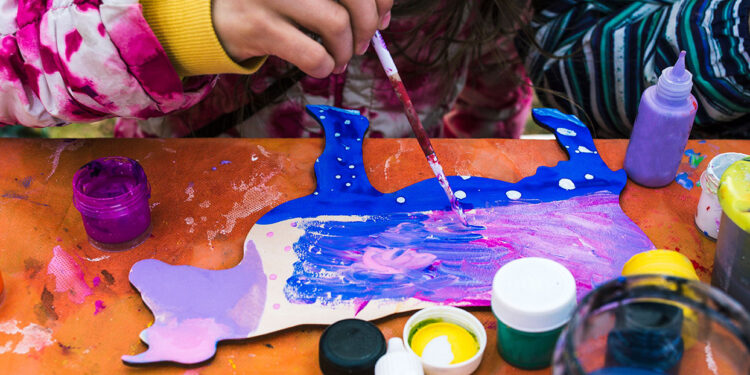By Jennifer Nairne
Most of the current debate surrounding education seems to be focused on the “core” subjects and integrating “21st Century skills” into classrooms, while Art has been largely ignored and even ridiculed. Artistic pursuits are often seen as elitist and many believe the subject itself offers no practical benefits beyond the purely aesthetic. Combine this misconception with an American school system obsessed with standardized test scores and teacher performance; you are left with an entire generation of kids who lack any sort of art education.
While this may not seem tragic, the current efforts appear aimed to produce a workforce incapable of making independent decisions or creating original solutions. Why are we preparing our children to work in low-paying, menial jobs? This economy needs the creativity and ingenuity for which America is known, not thousands of college graduates that are incredibly skilled at filling in those little bubbles on standardized tests.
There are some skills and benefits from art education that may not be obvious, but are easily understood. Parents and educators can attest to the increases in fine motor skill development through art activities. Art also provides children the opportunity for healthy self-expression and allows them the opportunity to look at the world through a different perspective. Studying art history and using famous masterpieces to explore cultural geography are just some of the many ways Art can offer children the chance to engage with content in rich and meaningful ways.
But Art is more than another tool in which to teach “core subject material”. Art allows our brains the freedom of creativity. Art stimulates the imagination and encourages thinking outside the box. It trains children to see patterns, use intuition, and find new approaches for familiar problems. Kids gain confidence through incorporating “mistakes” and bringing their visions to life, instead of falling apart at the first obstacle. They learn analytical skills through their artistic interpretation of reality, maintaining focus on multiple components while never losing sight of the overall composition. These are the skills and abilities that are needed for an extremely competitive and increasingly global job market.
Recent research efforts to study Art and learning have confirmed many of the positive effects seen by countless art teachers. Studies have shown that art aids the brain in searching for knowledge. In other words, if your brain were the Internet, practicing artistic activities allows you to perform searches more efficiently. One study suggests that creativity is allowed to flow freely only when we are able to “shut off” the areas of the brain regulating self-control and inhibition. Researchers have indicated that art specifically touches those areas of the mind that are unable to be expressed through words. There are several more studies currently in the field, examining the relationship between art and learning, but most use standardized state test scores to judge the effectiveness of a program. It may be difficult to find any substantial results using tests that are already widely regarded as ineffective measurement tools.
This is yet another instance that homeschooled students can receive instruction that is being ignored or underfunded in almost every American public school classroom. Parents can find an enormous range of resources available online to assist in creating an art education curriculum at home. There are entire programs available, with a licensed art teacher, supporting your child’s artistic development and encouraging continued growth. And in addition to the expected curriculum guides, children’s books, and art content, local libraries often exhibit artwork from local artists. Finding art in your community together is a great way to acknowledge and validate the importance art and self-expression is to us all.
We have all experienced being frustrated by a problem or stymied by a challenging assignment. Only after pulling back for a moment, perhaps daydreaming or doodling for some time, does inspiration strike and the solution becomes obvious. It is that spark of creative insight that art nurtures and stimulates. And it is the same spark that fuels the ingenuity and determination of the American spirit – that with imagination, hard work and perseverance, anything is possible. Giving children a rich, diverse art education is exactly what is needed to ensure they are prepared for the monumental challenges their generation will face in the near future. JN









